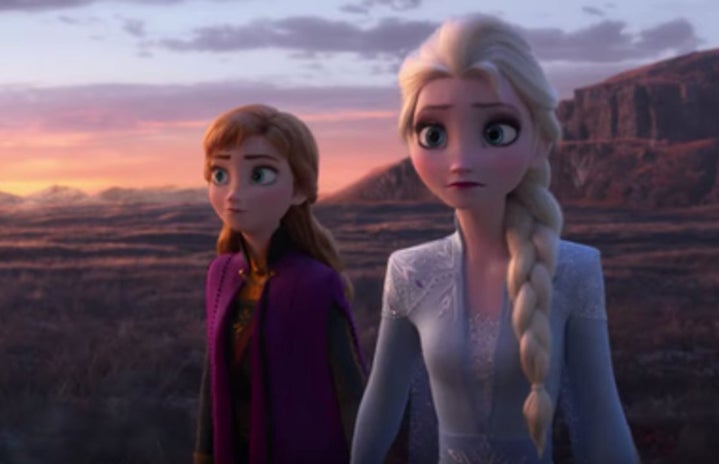By now, I think we’re all familiar with Frozen, Disney’s 2013 animated adaptation of The Snow Queen by Hans Christian Andersen. The film follows two sisters, Anna and Elsa, as they cope with the loss of their parents, struggle with their ascension to the throne, and Elsa’s mysterious ice powers.
The romance mainly revolves around Anna, and two men – Hans and Kristoff. Yet Elsa conspicuously is without a love interest, even directly saying to Anna (in a comedic fourth-wall break), “You can’t marry a man you just met.” The audience could just read this as a cautionary warning by an older sister, but what if it’s more than that?
The climax of the movie (spoiler alert) involves Anna being frozen, only to be freed by true love. This is not achieved however, by either of the men, but by her sister Elsa. This is a clear indication that platonic love is just as true, fierce, and valid as romantic love.
We can see this being further developed in the 2019 sequel Frozen II. Much of the humor revolves around Kristoff’s many failed attempts to propose to an oblivious Anna. The beginning scene has the main cast – Elsa, Anna, Kristoff, Sven, and Olaf – playing charades. Anna and Kristoff are obviously in love, but the audience can also see just how much Elsa loves her family. The call-to-action song as I like to think of it as – Into the Unknown – which is very reminiscent of Let It Go from the first movie – includes the lyrics, “Everyone I’ve ever loved is here within these walls, I’m sorry secret siren, but I’m blocking out your call.”
She does not have a romantic partner, but she clearly identifies her family as the people she loves. Throughout the movie, she is still sans a love interest, and this doesn’t define her in any way. She simply loves.
The asexuality spectrum includes aromanticism as well, so this argument also applies. She has no interest in finding a love interest, and is content to continue being around her family.
I’ve also seen that Elsa can be read as a sapphic queen – especially since she ends up living her cottage core life in the forest – which is also a valid interpretation.
As an ace person myself however, it was so validating to see a female character who was not defined by her romance with a partner, but by the love she held for her family. Even if it’s never explicitly acknowledged, I feel like it’s a step in the right direction.
What do you all think?


